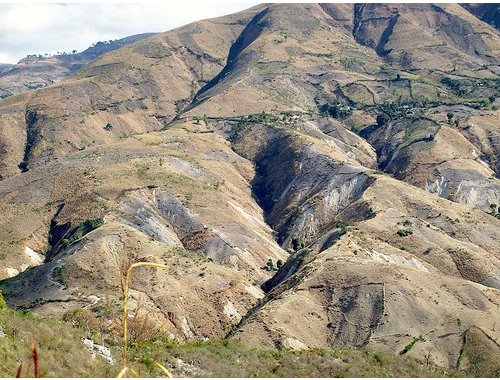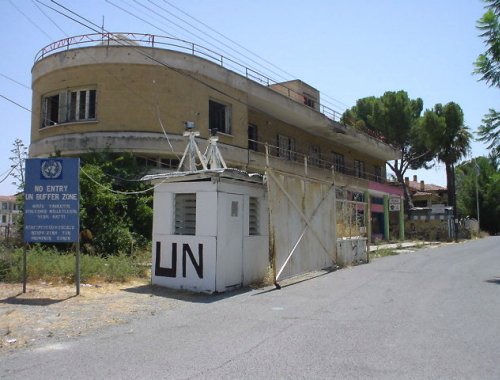Across Arctic America: Narrative of the Fifth Thule Expedition is Rasmussen’s account of his 1921 expedition from Greenland to Siberia by dog sled. Or to be exact, his 1921-24 expedition, because this was an epic three year trip. They went a long way — 20,000 miles — but they certainly could have done it faster if it was one of those expeditions done for their own sake. Rather, this was a scholarly expedition; for the first year there were a large group of specialists in different disciplines based in Eastern Canada. Then Rasmussen set off with just two companions, Greenland Eskimos* called Miteq and Anarulunguaq, to continue his anthrolopogical investigations across the whole continent.

I went to quite a lot of trouble to get this book, but when I received it my heart sank a bit, because it’s fucking huge, the kind of book you could club seals with. I imagined I would be trawling through dry, old-fashioned prose for weeks. Actually it’s an anti-Tardis book, smaller on the inside; it’s a reprint edition, and they’ve obviously enlarged the original print considerably and then surrounded it with lots of white space. It makes for quite a short 400 pages. And the narrative romps along at a very respectable pace; the scientific report of the Fifth Thule Expedition filled ten volumes (not all written by Rasmussen), and his popular account of the trip in Danish was two volumes, which he edited down considerably in translating it into a one-volume English version. So it’s not carrying any excess weight.
Rasmussen’s interest was in comparing the Eskimo cultures from his native Greenland and the various Eskimo groups of North America. I didn’t realise that there was such a cultural continuity across the whole region; Rasmussen’s first language was Greenlandic and he was able to talk with Eskimos all the way across Canada, until finally in one part of Alaska he found some with a dialect sufficiently different from his own that he required an interpreter.
Every wizard has a belt, which often plays a great part in his invocations of the spirits. I was fortunate enough to acquire one of these belts from a woman who was herself a witch doctor, named Kinalik. It consisted of an ordinary strap of hide on which were hung or strung the following items: a splinter from the stock of a gun worn in recognition of the fact that her initiation had taken place by means of visions of death; a piece of sinew thread, which had formerly been used to fasten tent poles with, and had on some occasion or other been used for a magic demonstration; a piece of ribbon from a packet of tobacco; a piece of an old cap formerly beginning to her brother — the brother was now dead, and was one of her helping spirits — a piece of white caribou skin, some plaited withies, a model of a canoe, a caribou’s tooth, a mitten and a scrap of sealskin. All these things possessed magnetic power, by virtue of their being given to her by persons who wished her well. Any gift conveys strength. It need not be great or costly in itself; the intrinsic value of the object is nothing, it is the thought which goes with it that gives strength.
Kinalik was still quite a young woman, very intelligent, kind-hearted, clean and good-looking, and spoke frankly, without reserve. Igjugarjuk was her brother-in-law, and had himself been her instructor in magic. Her own initiation had been severe; she was hung up to some tent poles planted in the snow and left there for five days. It was midwinter, with intense cold and frequent blizzards, but she did not feel the cold, for the spirit protected her. When the five days were at an end, she was taken down and carried into the house, and Igjugarjuk was invited to shoot her, in order that she might attain to intimacy with the supernatural by visions of death. The gun was to be loaded with real powder, but a stone was to be used instead of the leaden bullet, in order that she might still retain connection with earth. Igjugarjuk, in the presence of the assembled villagers, fired the shot, and Kinalik fell to the ground unconscious. On the following morning, just as Igjugarjuk was abou to bring her to life again, she awakened from the swoon unaided. Igjugarjuk asserted that he had shot her through the heart, and that the stone had afterwards been removed and was in the possession of her old mother.
The emphasis of the book is very much on the anthropology; there’s relatively little of the Boys’ Own adventure stuff about what it’s like to travel by dog sled across the Arctic — it’s there, but it’s not the point. He spends far more time talking about his interactions with the locals, relaying songs, folk stories and religious beliefs, talking about hunting techniques, building methods and clothing. All of which I found fascinating. He is keenly observant and clearly has a sympathy with the Eskimo. On the other hand, it’s amazing how much more careful we have become about the language we use in the past hundred years; Rasmussen is about as well-informed, sympathetic and enthusiastic an observer as any people could want, and yet by modern standards there are times when his phrasing comes across as mildly patronising and paternalistic. I don’t say that as a criticism of him, and I don’t imagine that a modern observer would necessarily be any less patronising in their real attitudes; I just think a modern writer would be very self-conscious about that risk and would bend over backwards to avoid any hint of it.

If all this anthropological stuff sounds a bit dry, well, I guess if it’s really not the kind of thing that interests you it might be. But Rasmussen writes well and has a sense of humour, as with this exchange, after he has been told a fable about the Fox and the Wolf:
This seemed an odd sort of ending, and I said as much. “What is it supposed to mean exactly?” I asked.
“H’m, well,” answered Netsit, “we don’t really trouble ourselves so much about the meaning of story, as long as it is amusing. It is only the white men who must always have reasons and meanings in everything. And that is why our elders always say we should treat white men as children who always want their own way. If they don’t get it, they make no end of a fuss.”
I left it at that.
Across Arctic America is my book from Greenland for the Read The World challenge. I found it absolutely fascinating; it offers a glimpse of a people living in quite extraordinarily harsh conditions at a time when many of them were largely untouched by the modern world.
*Yes, I know, ‘Eskimo’ is no longer the preferred term, but it is the term used by Rasmussen. I considered using Inuit instead, but I for all I know there is some further nuance and I would still end up getting it wrong… so I thought I’d stick to being consistent with the book. No offence is intended.
» The images, ‘Eskimo Puppies‘ and ‘Approaching Blizzard‘, are from a set of cigarette cards called ‘Sights of the Arctic’ which I found in the New York Public Library Digital Gallery.



